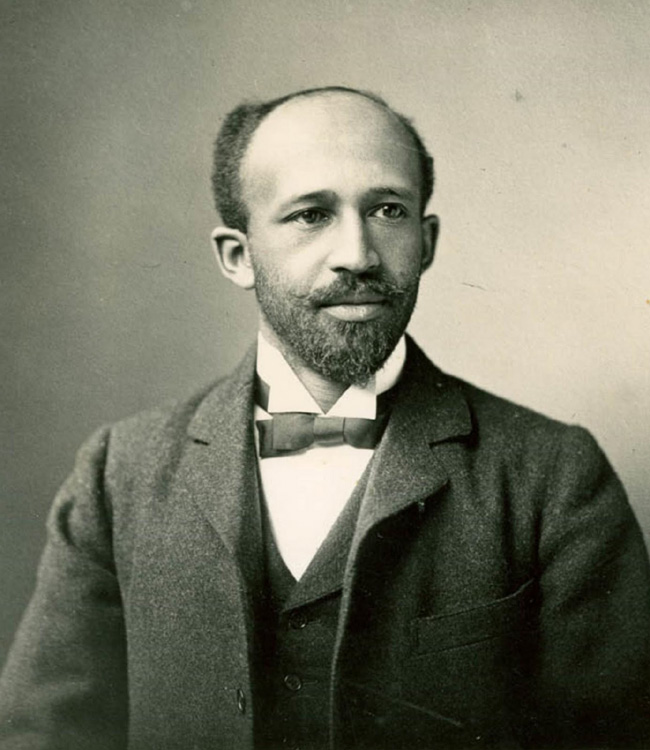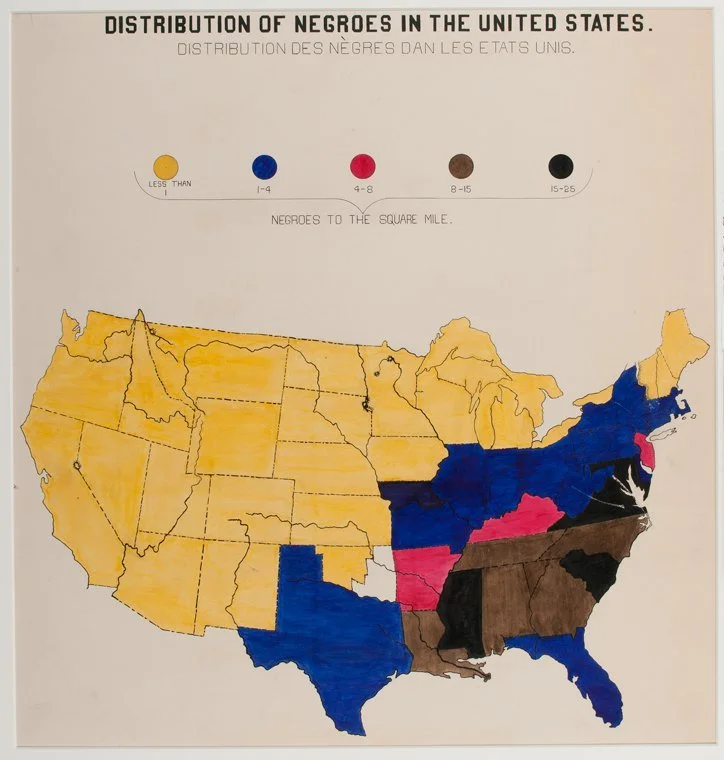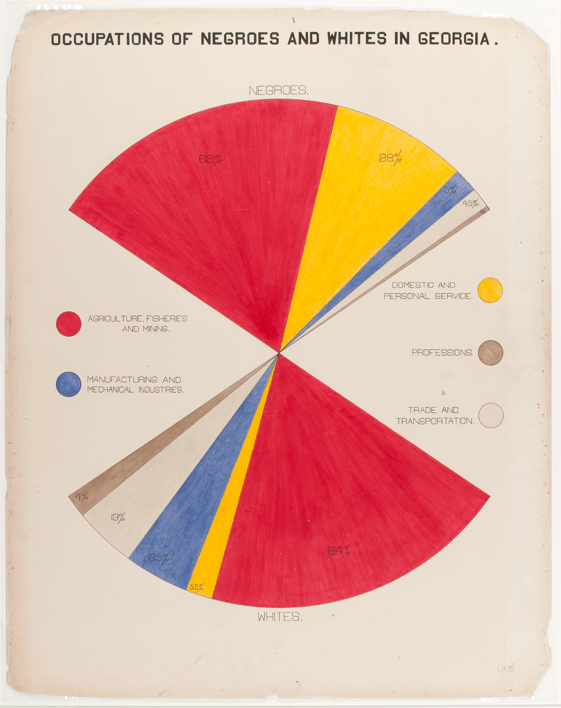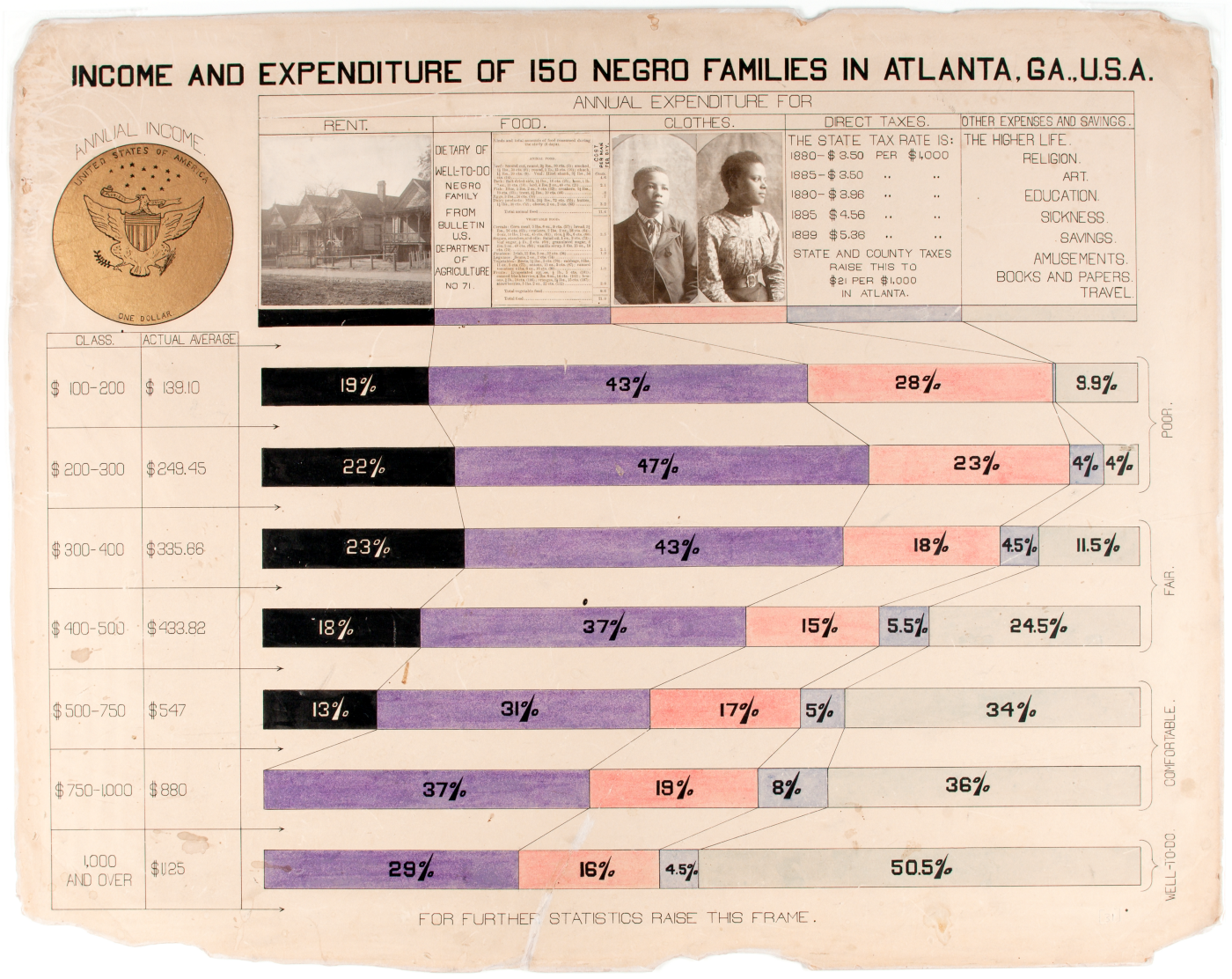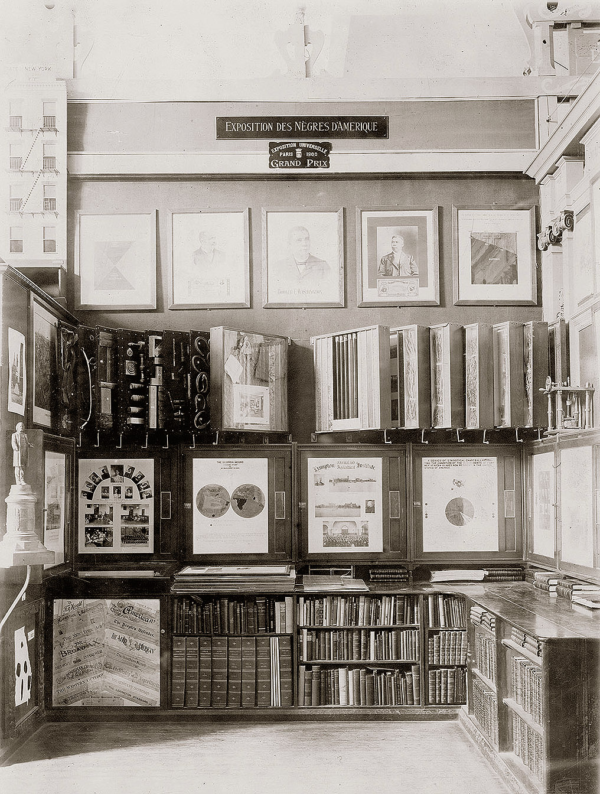How W.E.B. Dubois Used Data Analytics to Tell the Story of Black Americans
Introduction
William Edward Burghardt Du Bois (W.E.B Dubois) was an American sociologist, historian, civil rights activist, and author who lived from 1868 to 1963. He was the first African American to earn a Ph.D. from Harvard University, and he is widely regarded as one of the most influential thinkers of the 20th century. Dubois was a prominent leader in the civil rights movement, advocating for equal rights for African Americans through his writing, speeches, and activism. He was a co-founder of the National Association for the Advancement of Colored People (NAACP), and he played a pivotal role in the Pan-African movement. Dubois authored several books, including "The Souls of Black Folk," and his work has had a lasting impact on the fields of sociology, history, and civil rights.
The 1900 World's Fair, also known as the Exposition Universelle de 1900, was a major international exhibition held in Paris, France. The fair was organized to showcase the achievements of the world's nations in areas such as science, technology, industry, art, and culture. It was also an opportunity for countries to promote their economic and political power on the world stage. The fair attracted millions of visitors from around the world, and it featured a wide range of exhibits, including pavilions from over 50 countries, exhibitions of new inventions, displays of cultural artifacts, and performances by artists and musicians. The fair was a significant event in the history of international exhibitions and had a lasting impact on the development of world's fairs and expositions in the 20th century.
W.E.B Dubois was invited to participate in the 1900 World's Fair by the United States government, which was seeking to showcase the progress and achievements of the country to the world. Dubois was tasked with creating an exhibit that would represent the black American experience and showcase the contributions of African Americans to American society. Dubois saw this as an opportunity to challenge the prevailing racial stereotypes and prejudice of the time, and to present a more accurate and positive picture of black Americans.
To achieve this, Dubois used data analytics to collect and analyze statistical information on the social and economic conditions of black Americans. He used this data to create a series of charts, graphs, and maps that illustrated the progress and achievements of African Americans in education, employment, and other areas. Dubois also included photographs of prominent black Americans and examples of their accomplishments, such as patents and inventions.
Dubois' exhibit was titled "The Exhibit of American Negroes," and it was housed in a separate building at the fairgrounds. The exhibit attracted a great deal of attention and was praised by many visitors for its educational value and its positive portrayal of black Americans. The exhibit also helped to establish Dubois as a leading scholar in the field of sociology and data analytics.Background
W.E.B Dubois was born on February 23, 1868, in Great Barrington, Massachusetts. He was the first African American to earn a Ph.D. from Harvard University, where he studied history, sociology, and economics. After completing his education, Dubois worked as a professor of economics and history at Atlanta University in Georgia, where he conducted groundbreaking research on the social and economic conditions of black Americans in the South.
Dubois was also a prolific author and writer, and his most famous work is "The Souls of Black Folk," which was published in 1903. The book is a collection of essays that explores the experiences of black Americans in the post-Civil War era, and it has been widely regarded as a seminal work in the fields of sociology, history, and African American studies.
In addition to his academic work, Dubois was a prominent civil rights activist and leader. He co-founded the National Association for the Advancement of Colored People (NAACP) in 1909, and he played a leading role in the organization for many years. Dubois was also a vocal advocate for Pan-Africanism, which is the idea that people of African descent around the world should work together to achieve political and economic independence.
Throughout his career, Dubois faced significant opposition and hostility from those who opposed his ideas and activism. However, he remained committed to his work and his vision of a more just and equitable society for all people. Dubois passed away in 1963, leaving behind a rich legacy of scholarship, activism, and leadership that continues to inspire people around the world.
The 1900 World's Fair took place during a time of significant social and political change in Europe and the United States. At the turn of the 20th century, many European countries were engaged in a period of imperial expansion and global competition, which led to increased nationalism and rivalries between nations.
In the United States, the country was undergoing a process of rapid industrialization and urbanization, which had profound effects on American society. The country was also grappling with issues of racial inequality and segregation, particularly in the Southern states, where black Americans faced widespread discrimination and violence.
The 1900 World's Fair was held in Paris, which was at the forefront of many of the cultural and artistic movements of the time, including Art Nouveau and Impressionism. The fair provided an opportunity for countries to showcase their achievements and cultural identity, and it was seen as a chance for European countries to assert their dominance over the rest of the world.
In the United States, the country's participation in the fair was seen as a way to promote American economic and political power on the world stage. However, the decision to include an exhibit on black Americans was controversial, as many white Americans at the time held deeply entrenched racist beliefs and were resistant to any suggestion that black Americans were equal to white Americans. Despite these challenges, Dubois was able to use the fair as a platform to challenge these beliefs and to present a more accurate and positive portrayal of black Americans.
Black Americans faced numerous challenges during the time of the 1900 World's Fair, including widespread racism, discrimination, and segregation. The Civil War had officially ended slavery in the United States, but black Americans continued to face systemic and institutionalized oppression in the years that followed.
In the Southern states, black Americans were subjected to Jim Crow laws, which enforced racial segregation and denied them many of the rights and opportunities enjoyed by white Americans. Black Americans were also subject to widespread violence and intimidation, often carried out by white supremacist groups like the Ku Klux Klan.
Black Americans faced significant economic challenges as well. Many were excluded from well-paying jobs and forced to work in low-wage occupations. Black farmers faced discrimination from government agencies and were often denied access to credit and other resources that would help them succeed.
Black Americans also faced significant challenges in accessing education and healthcare. Segregated schools were often underfunded and provided lower-quality education than their white counterparts, and black Americans were often denied access to medical care or received lower-quality care than white Americans.
Despite these challenges, black Americans persevered and made significant progress in the years that followed the 1900 World's Fair. The Civil Rights Movement of the 1950s and 60s brought about significant legal and social changes, and black Americans continue to make important contributions to American society and culture today.
W.E.B Dubois' Vision
Dubois had a rigorous and systematic approach to data collection, which he used to inform his research and advocacy on behalf of black Americans. In his work at Atlanta University, Dubois established a research program that collected detailed data on the social and economic conditions of black Americans in the South.
Dubois and his team used a variety of methods to collect data, including surveys, interviews, and observation. They collected information on a wide range of topics, including education, employment, housing, healthcare, and political participation.
Dubois was particularly interested in using statistical analysis to understand the social and economic conditions of black Americans. He believed that by using data to measure and document the extent of inequality and discrimination, he could more effectively advocate for change.
Dubois' work in data collection was groundbreaking for its time, and it set the standard for sociological research on race and inequality. His approach to data collection has been influential in shaping the field of sociology, and it continues to inform research on social and economic inequality today.
The data collected by Dubois and his team was significant for several reasons. First, it provided a comprehensive and detailed picture of the social and economic conditions of black Americans in the South at a time when very little information was available. The data documented the extent of poverty, discrimination, and inequality faced by black Americans, and it challenged prevailing stereotypes and misconceptions about the black community.
Second, the data was significant because it provided evidence to support Dubois' arguments about the need for social and political change. Dubois used the data to demonstrate the ways in which black Americans were systematically excluded from political and economic power, and he argued that this exclusion was a direct result of discrimination and inequality.
Finally, the data collected by Dubois was significant because it laid the groundwork for future research on race and inequality in the United States. Dubois' approach to data collection and analysis set the standard for sociological research on race and inequality, and his work has influenced generations of researchers and scholars in this field.
Overall, Dubois' data collection was a critical component of his advocacy for social and political change. By using data to document the extent of inequality and discrimination, Dubois was able to provide a powerful and persuasive argument for the need for change, and his work has had a lasting impact on our understanding of race and inequality in the United States.
Dubois' work had a profound impact on the field of sociology, particularly in the study of race and inequality. Dubois was one of the first sociologists to use rigorous data collection and analysis to document social and economic conditions of marginalized groups, and his work helped to establish sociology as a legitimate field of academic inquiry.
Dubois' approach to data collection and analysis also contributed to the development of new research methods in sociology. His use of statistical analysis to study the social and economic conditions of black Americans helped to pioneer the use of quantitative research methods in sociology, which are now widely used in the field.
Dubois' work also helped to shift the focus of sociology away from a purely descriptive approach to social issues, towards a more analytical and critical approach. Dubois' research highlighted the ways in which social and economic inequality were structured by institutionalized discrimination and exclusion, and he argued that these inequalities could only be addressed through political and social change.
Finally, Dubois' work contributed to the development of a new generation of sociologists and social activists who were committed to studying and addressing social inequality. His advocacy for social and political change inspired many others to work towards creating a more just and equitable society, and his legacy continues to shape the field of sociology today.
The Exhibit
Dubois was tasked with constructing an exhibit for the 1900 World's Fair in Paris that would showcase the progress and achievements of black Americans. Dubois worked tirelessly to create an exhibit that would challenge prevailing stereotypes and misconceptions about black Americans and showcase their contributions to American society.
The exhibit was titled "The Exhibit of American Negroes," and it featured a wide range of materials that highlighted the accomplishments and contributions of black Americans. The exhibit included photographs, charts, graphs, and other visual materials that documented the economic, social, and political progress of black Americans.
Dubois' exhibit also included a series of portraits of black Americans, which were meant to showcase the diversity and complexity of the black community. The portraits were accompanied by biographical information that highlighted the individual achievements and contributions of each person.
The exhibit was groundbreaking for its time, and it challenged prevailing stereotypes and misconceptions about black Americans. The exhibit demonstrated that black Americans were making significant progress in education, business, and other areas, and it helped to promote a more positive and nuanced understanding of the black community.
The exhibit was also significant because it was one of the first times that black Americans were able to showcase their accomplishments on an international stage. The exhibit received widespread acclaim and helped to raise awareness of the struggle for civil rights and equality in the United States.
Overall, Dubois' exhibit was a powerful and influential statement on the achievements and contributions of black Americans, and it helped to challenge prevailing stereotypes and misconceptions about the black community. The exhibit was a testament to Dubois' commitment to using data and research to advocate for social and political change, and it remains a landmark achievement in the history of sociology and civil rights advocacy.
The exhibit created by Dubois for the 1900 World's Fair in Paris was a significant achievement in the history of civil rights advocacy and sociology. The exhibit challenged the prevailing stereotypes and misconceptions about black Americans and provided a more nuanced and positive portrayal of their achievements and contributions to American society.
The exhibit was significant because it demonstrated that black Americans were making significant progress in education, business, and other areas, despite facing significant obstacles and discrimination. The exhibit showcased the work of prominent black educators, entrepreneurs, and artists, and it helped to promote a more positive and nuanced understanding of the black community.
The exhibit was also significant because it represented a major step forward in the fight for civil rights and equality in the United States. The exhibit was one of the first times that black Americans were able to showcase their accomplishments on an international stage, and it helped to raise awareness of the struggle for civil rights and equality in the United States.
Dubois' exhibit was also significant because it laid the groundwork for future efforts to use data and research to advocate for social and political change. Dubois' use of rigorous data collection and analysis helped to establish sociology as a legitimate field of academic inquiry, and his work inspired generations of researchers and activists to study and address social inequality.
Finally, the exhibit was significant because it helped to inspire a new generation of civil rights activists and leaders. The exhibit demonstrated that progress was possible, even in the face of significant obstacles and discrimination, and it helped to inspire a new generation of civil rights activists and leaders who were committed to fighting for justice and equality.
Overall, Dubois' exhibit was a landmark achievement in the history of civil rights advocacy and sociology. The exhibit challenged prevailing stereotypes and misconceptions about black Americans, promoted a more positive and nuanced understanding of the black community, and inspired future generations of activists and researchers to study and address social inequality. The exhibit created by W.E.B. Dubois for the 1900 World's Fair in Paris had a significant impact on the fair itself. The exhibit was one of the most popular and talked-about exhibits at the fair, and it helped to challenge prevailing stereotypes and misconceptions about black Americans.
Dubois' exhibit attracted a wide range of visitors, including academics, politicians, and members of the general public. Visitors to the exhibit were impressed by the quality of the materials on display and by the rigor of Dubois' research.
The exhibit also helped to promote a more positive and nuanced understanding of the black community among fairgoers. Many visitors to the exhibit had never encountered such a positive and nuanced portrayal of black Americans, and the exhibit helped to challenge their preconceived notions about the black community.
Finally, the exhibit helped to raise awareness of the struggle for civil rights and equality in the United States. Visitors to the exhibit learned about the challenges facing black Americans, and many were inspired to take action to support the cause of civil rights.
Overall, Dubois' exhibit had a significant impact on the 1900 World's Fair in Paris. The exhibit challenged prevailing stereotypes and misconceptions about black Americans, promoted a more positive and nuanced understanding of the black community, and raised awareness of the struggle for civil rights and equality in the United States.
Reception
The response of fairgoers to W.E.B. Dubois' exhibit at the 1900 World's Fair in Paris was overwhelmingly positive. The exhibit attracted a wide range of visitors, including academics, politicians, and members of the general public, and it was one of the most popular and talked-about exhibits at the fair.
Many visitors to the exhibit were impressed by the quality of the materials on display and by the rigor of Dubois' research. The exhibit included photographs, charts, and other materials that provided a detailed and nuanced picture of the achievements and contributions of black Americans. Visitors to the exhibit were also impressed by the way in which Dubois used data and statistics to challenge prevailing stereotypes and misconceptions about the black community.
The exhibit helped to promote a more positive and nuanced understanding of the black community among fairgoers. Many visitors to the exhibit had never encountered such a positive and nuanced portrayal of black Americans, and the exhibit helped to challenge their preconceived notions about the black community.
Finally, the exhibit inspired many fairgoers to take action to support the cause of civil rights and equality. Visitors to the exhibit learned about the challenges facing black Americans and were inspired by the progress that had been made despite these challenges. Many visitors left the exhibit with a renewed commitment to support the cause of civil rights and equality.
Overall, the response of fairgoers to Dubois' exhibit was overwhelmingly positive. The exhibit challenged prevailing stereotypes and misconceptions about black Americans, promoted a more positive and nuanced understanding of the black community, and inspired fairgoers to take action to support the cause of civil rights and equality.
BThe press reaction to W.E.B. Dubois' exhibit at the 1900 World's Fair in Paris was mixed. While some newspapers and journals praised the exhibit for its quality and significance, others criticized it for its focus on race and for its apparent lack of focus on the achievements of white Americans.
Some newspapers and journals praised the exhibit for its high quality and for the rigor of Dubois' research. The New York Times, for example, wrote that the exhibit was "a creditable representation of the progress made by the colored people in the United States" and praised Dubois for his "remarkable industry and scholarly ability."
Other newspapers and journals, however, were less positive in their assessments. Some criticized the exhibit for its focus on race and for what they saw as an undue emphasis on the achievements of black Americans. The French journal Revue des Deux Mondes, for example, criticized the exhibit for its focus on race and argued that it was "a pity that the colored race, which seems to want to separate itself from the rest of the nation, has found a representative to present it in such an unfortunate way."
Overall, the press reaction to Dubois' exhibit was mixed. While some praised the exhibit for its quality and significance, others criticized it for its focus on race and for what they saw as an undue emphasis on the achievements of black Americans. However, despite the criticism, the exhibit had a significant impact on fairgoers and helped to promote a more positive and nuanced understanding of the black community.
The legacy of W.E.B. Dubois' exhibit at the 1900 World's Fair in Paris is significant and far-reaching. The exhibit challenged prevailing stereotypes and misconceptions about black Americans, promoted a more positive and nuanced understanding of the black community, and inspired fairgoers to take action to support the cause of civil rights and equality.
In the field of sociology, Dubois' exhibit is recognized as one of the earliest and most important examples of the use of data analytics to tell the story of a marginalized community. Dubois' pioneering work laid the foundation for future generations of sociologists and social scientists to use data and statistics to challenge prevailing stereotypes and misconceptions about marginalized communities and to promote a more positive and nuanced understanding of their experiences.
The exhibit also had a significant impact on the civil rights movement in the United States. The exhibit highlighted the progress that had been made by black Americans despite the challenges they faced, and it inspired many fairgoers to take action to support the cause of civil rights and equality. The exhibit served as a reminder that progress was possible, even in the face of daunting challenges, and it helped to galvanize support for the civil rights movement in the years to come.
Today, the legacy of Dubois' exhibit lives on in the work of countless scholars, activists, and organizers who continue to use data and statistics to challenge prevailing stereotypes and misconceptions about marginalized communities and to promote a more positive and nuanced understanding of their experiences. The exhibit serves as a powerful reminder of the importance of telling the stories of marginalized communities and of the transformative power of data and statistics in advancing social justice and equality.
Conclusion
W.E.B Dubois' work was significant in many ways. As a pioneering sociologist, he was one of the first scholars to use data and statistics to tell the story of marginalized communities, and his work helped to challenge prevailing stereotypes and misconceptions about black Americans. Dubois' use of data and statistics was particularly innovative for his time, as it allowed him to provide a more rigorous and evidence-based account of the experiences of black Americans.
Dubois was also an important civil rights activist and organizer. He was a founding member of the National Association for the Advancement of Colored People (NAACP) and played a key role in the organization's early efforts to challenge racial discrimination and promote civil rights and equality. Dubois' work as an activist and organizer helped to inspire a generation of civil rights activists and leaders, and his ideas and insights continue to influence the struggle for racial justice and equality today.
In addition to his work as a sociologist and civil rights activist, Dubois was also a prolific writer and public intellectual. His writings on race, democracy, and social justice continue to be widely read and debated today, and his ideas have had a profound impact on a wide range of fields, including sociology, political science, and philosophy. Dubois' legacy as a writer and public intellectual is perhaps best encapsulated in his most famous work, The Souls of Black Folk, which remains a classic of American literature and a powerful meditation on race, identity, and the struggle for freedom and equality.
Overall, W.E.B Dubois' work was significant in many ways. As a pioneering sociologist, civil rights activist, and writer, he challenged prevailing stereotypes and misconceptions about black Americans, promoted a more positive and nuanced understanding of the black community, and inspired generations of scholars, activists, and organizers to continue the struggle for racial justice and equality.
W.E.B. Dubois' work had a significant impact on the field of data analytics, particularly in the context of social science research. Dubois was one of the first sociologists to use data and statistics to study the experiences of marginalized communities, and his approach to data collection and analysis laid the foundation for future generations of sociologists and social scientists to use data to challenge prevailing stereotypes and misconceptions about these communities.
Dubois' work also helped to shape the development of statistical methods in social science research. His use of statistical methods to study social phenomena was innovative for its time and helped to establish the importance of data-driven research in the social sciences. Dubois' work on the Philadelphia Negro, in particular, was influential in the development of urban sociology as a distinct subfield of sociology.
Dubois' approach to data analytics also had a significant impact on the civil rights movement. By using data to document the experiences of black Americans and to challenge prevailing stereotypes and misconceptions about their community, Dubois helped to mobilize support for the cause of civil rights and equality. His work inspired a generation of civil rights activists and leaders to use data and statistics to promote social change, and it remains a powerful example of the transformative potential of data-driven research in advancing social justice and equality.
Today, Dubois' work continues to influence the field of data analytics and social science research more broadly. His pioneering approach to data collection and analysis, his commitment to using data to challenge prevailing stereotypes and misconceptions about marginalized communities, and his focus on the importance of social justice and equality in research continue to inspire scholars and researchers around the world.
The exhibit that W.E.B. Dubois helped to create for the 1900 World Fair has had a lasting legacy in several ways. Firstly, it was a groundbreaking example of how data and statistics could be used to challenge prevailing stereotypes and misconceptions about marginalized communities. Dubois' use of data and statistics to document the experiences of black Americans helped to provide a more accurate and nuanced picture of the black community, and challenged the prevailing notion that black Americans were intellectually inferior to white Americans.
Secondly, the exhibit helped to mobilize support for the cause of civil rights and equality. By highlighting the achievements and contributions of black Americans, and by showing the ways in which racial discrimination had limited their opportunities and prospects, the exhibit helped to raise awareness of the injustices faced by black Americans and inspired many people to join the fight for civil rights and equality.
Finally, the exhibit has had a lasting impact on the field of sociology and social science research more broadly. Dubois' pioneering approach to data collection and analysis helped to establish the importance of data-driven research in the social sciences, and his work on the Philadelphia Negro laid the foundation for the development of urban sociology as a distinct subfield of sociology.
Overall, the exhibit that Dubois helped to create for the 1900 World Fair has had a lasting impact on our understanding of race, identity, and social justice. It challenged prevailing stereotypes and misconceptions about black Americans, inspired a generation of civil rights activists and leaders, and helped to establish the importance of data-driven research in the social sciences. Its legacy continues to inspire scholars, researchers, and activists around the world to work towards a more just and equitable society.
ABOUT THE AUTHOR
Germar Reed, Senior Advisor to the Head of Applied Analytics + Insights – at GM and Principle at District Analytics, bringing more than 17 years of data-driven marketing and advanced analytics experience to the team. He has extensive experience in developing and applying database marketing strategies for many Fortune 500 companies across a variety of industries, including financial services, technology, retail, automotive and healthcare. Throughout his career, he has been associated with the development of many well-known relationship marketing brands and customer loyalty strategies.

